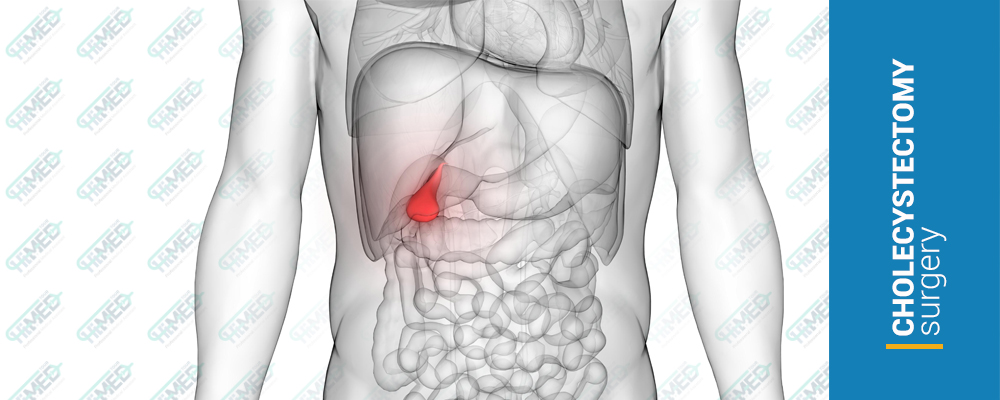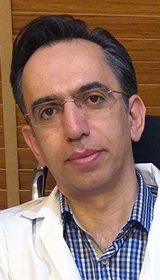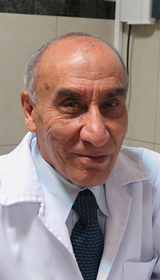
Cholecystectomy (Gallbladder-Removal Surgery)
4min ReadCholecystectomy, or gallbladder-removal surgery, is one of the most common abdominal surgeries.
The gallbladder is a small, pear-shaped sac located in the right side of the abdomen and under the liver. It stores the bile produced by the liver and releases it into the bile ducts to help digest food (fats in particular). The bile ducts then move the bile to the small intestines. If the gallbladder doesn’t function properly, small or large stones (gallstones) will start to form which can cause pain and obstruction in the bile ducts. Unfortunately, these stones do not disappear by themselves. Surgery should be performed to relieve the symptoms and problems caused by gallstones. Occasionally, a cholecystectomy is done on patients who have large gallbladder polyps or are suspected for gallbladder cancer.
There are two methods that a surgeon can use to remove the gallbladder, laparoscopy (key-hole surgery) and open abdominal surgery. Both patients and surgeons normally prefer laparoscopy but in some cases, open surgery is the only option. These cases include patients who suffer from:
- Bleeding disorders that are resistant to treatment
- A high risk of gallbladder cancer
- Severe underlying heart and lung diseases
Treatment duration
The length of your treatment and recovery varies depending on the cause of your cholecystectomy, the type of surgery, and your clinical condition. The surgery takes 2 hours on average. You may be immediately taken to the operating room if your condition is severe.
Paraclinical testing
Before the cholecystectomy, some blood testing will be done to assess your blood bilirubin and liver and pancreas enzyme levels. Your doctor may also order some medical images such as an ultrasound, a CT scan, and an HIDA scan. If the gallstone is in your common bile duct it would cause it to dilate, causing symptoms such as jaundice and abdominal pain to occur. In such cases doctors use an imaging technique called ERCP.
ERCP is an imaging and treatment technique where a thin tube is inserted into the mouth and then guided to the bile ducts and pancreas through the small intestines. In this method, the cause of obstruction of the ducts is investigated by contrast agent injection and subsequent imaging.
When the cause is determined, we can proceed to remove the gallstone(s), thus relieving the obstruction. A suitable time for the cholecystectomy is then determined.
Preoperative care, the procedure, and postoperative care
Before the procedure
Trust your doctor in choosing the right treatment and surgery method. Provide a full list of all the medication, supplements, and herbal medicines that you take. Inform your doctor of your medical history and allergies, especially allergies to anesthetics. Consult your doctor about taking blood thinners such as aspirin before the surgery. If the surgery is not done as an emergency, don’t eat anything for 8 hours before the surgery. Your clinical condition will be stabilized using the appropriate treatments and you will be given antibiotics to prevent infection.
The cholecystectomy procedure
A cholecystectomy is performed under general anesthesia therefore you will be unconscious throughout the procedure.
If open surgery is chosen, a long incision will be made either in the center of your abdomen or below the ribs of the right side. The surgeon will be able to directly see the gallbladder and the surrounding organs through this incision. The incision will be closed and sutured after the removal of the gallbladder.
However, if laparoscopic surgery is chosen, a few small incisions will be made through which a camera (scope) and the required tools are inserted. Images from the camera are viewable on a screen in the operating room. The surgeon uses these images to guide the tools and remove the gallbladder.
After the procedure
You will be transferred to the ward after completely regaining your consciousness.
At first, you must only consume liquids but you can slowly return to solid foods once you regain your appetite. You may feel pain and discomfort in your abdomen the day after the surgery, this can be alleviated using painkillers. A few tubes called “drains” will be inserted in the surgical wound to remove blood, pus and other fluids. They will be removed a few days after the surgery.
A laparoscopic cholecystectomy comes with less pain and a shorter recovery time. You can return to your normal life around 2 weeks after a laparoscopy and 6-8 weeks after an open surgery.
Important notes regarding cholecystectomy
If the gallbladder is not removed, complications caused by the obstruction of the bile ducts may occur. These complications include inflammation of the gallbladder (cholecystitis), inflammation of the pancreas (pancreatitis), and inflammation and infection of the bile ducts (cholangitis). The gallbladder may even become infected and ruptured. This infection may spread throughout the abdomen and endanger your life.
In what cases should I visit my doctor after a cholecystectomy?
Immediately inform your doctor if you experience the following:
- Fever and shivering
- Redness and swelling around the surgical wound
- Nausea and vomiting
- Severe bloating
- Yellowness of the skin and eyes
- Dark urine
Duration of hospitalization
The duration will vary depending on whether you had a laparoscopy or an open surgery. If you had a laparoscopy without any complication then you will be allowed to leave after one night. However, if you had an open surgery, you may have to stay for 2-3 nights.






Reviews
Number of pending reviews175